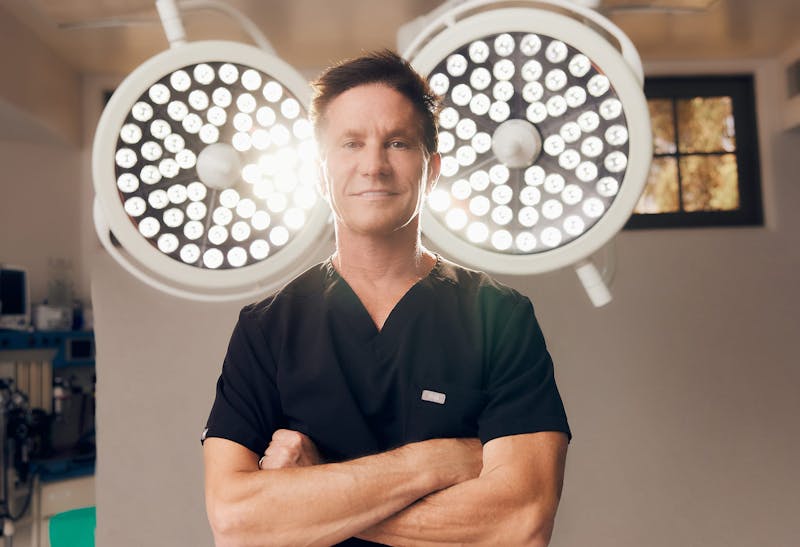
As a board-certified plastic surgeon with over 30 years of experience at Shapiro Aesthetic Plastic Surgery & Skin Klinic in Scottsdale, I've witnessed countless transformations and followed the evolving beauty standards in Hollywood. Among the most discussed celebrity aesthetic journeys is that of Courteney Cox, whose candid discussions about her experiences with cosmetic procedures have sparked important conversations about aging gracefully, reversing treatments, and finding balance in aesthetic enhancement.
The "Friends" star's journey offers valuable insights for anyone considering cosmetic procedures, and those interested in celebrity transformation stories can read more to understand the broader context. Her openness about both successful treatments and regrettable decisions provides a unique learning opportunity. As someone who has performed thousands of facial rejuvenation procedures, I find her story particularly instructive for understanding the importance of moderation, choosing qualified practitioners, and maintaining realistic expectations.
What makes Cox's experience especially relevant is her willingness to discuss not just the procedures she's had, but also her decision to dissolve fillers and embrace a more natural approach. This evolution in her aesthetic philosophy mirrors what I often discuss with patients at our Scottsdale practice: the goal isn't to chase youth indefinitely, but to enhance your natural beauty while maintaining facial harmony and authenticity.
The Journey Begins: Early Years
When Courteney Cox first appeared on our screens in the 1990s, she embodied the fresh-faced beauty typical of that era. Her naturally angular features, prominent cheekbones, and expressive eyes made her instantly recognizable. During the "Friends" decade, any cosmetic enhancements were subtle and professionally executed.
From my professional perspective, Cox likely began with conservative treatments in her late thirties. The initial changes were so gradual that they enhanced rather than altered her appearance. This approach aligns with what I recommend to patients at our practice: starting with minimal interventions and building gradually based on individual aging patterns, which you can explore in our detailed treatment philosophy.
The most noticeable early changes appeared to be strategic use of neurotoxins like Botox for forehead lines and crow's feet. These treatments, when properly administered, can maintain natural expression while softening dynamic wrinkles. Cox's early work demonstrated the importance of working with experienced practitioners who understand facial anatomy and the art of subtle enhancement.
Her initial journey also likely included professional skincare treatments. At our Skin Klinic, we emphasize that good cosmetic outcomes start with healthy skin. Laser treatments, chemical peels, and medical-grade skincare can significantly improve skin texture and tone without surgical intervention. Cox's glowing complexion throughout the 2000s suggests a comprehensive approach to skin health that patients can explore in our skincare protocols.
Notable Changes and Transformations
Around 2010, Cox's appearance began showing more dramatic changes, as detailed in this comprehensive guide to her transformation timeline. This period represents what many in our field recognize as the "overcorrection phase" that can occur when patients and practitioners lose sight of natural proportions. Her face appeared fuller, particularly in the cheek and lip areas, suggesting extensive use of dermal fillers.
From my experience treating patients who've had similar journeys, this phase often results from a combination of factors. First, there's the gradual normalization of enhanced features – what initially seems dramatic becomes the new normal, leading to requests for additional volume. Second, the accessibility of quick, non-surgical treatments can create a cycle of frequent touch-ups that accumulate over time, a phenomenon you can discover in our patient education materials.
Cox's transformation during this period included what appeared to be significant filler placement in multiple facial areas. The mid-face, lips, and possibly the temples showed increased volume. While these treatments can effectively restore youthful contours when used judiciously, excessive use can create an unnatural, overfilled appearance that actually ages the face.
This phase of her journey underscores a critical principle I emphasize with every patient: cosmetic enhancement should respect individual facial anatomy. At our Scottsdale practice, we use comprehensive facial analysis to determine appropriate treatment volumes and placement. The goal is enhancement that looks natural and ages gracefully, not transformation that requires constant maintenance, which patients can explore further through our consultation process.
Expert Analysis and Professional Insights
Perhaps the most inspiring aspect of Cox's journey is her decision to reverse many of her cosmetic treatments, as shown in this detailed analysis of her transformation. In recent interviews, she's spoken candidly about dissolving facial fillers and embracing a more natural appearance. This decision reflects a growing trend I've observed among patients who seek to undo previous overcorrection.
The process of dissolving fillers, typically using hyaluronidase enzyme, requires expertise and patience. In my practice, I've helped numerous patients through this reversal process. It's not simply about removing product; it's about carefully restoring natural facial contours while addressing any tissue changes that occurred during the filled period, a process patients can learn more in our reversal treatment options.
Cox's transformation back to a more natural appearance demonstrates several important points. First, most modern fillers are reversible, providing patients with options if they're unhappy with results. Second, the psychological impact of embracing natural aging can be profoundly positive. Many patients report feeling more authentic and confident after reducing their cosmetic enhancements.
Her current appearance suggests she's found an optimal balance, offering expert insights into successful aesthetic outcomes. While maintaining some subtle enhancements, she's allowed her natural bone structure and expressions to shine through. This approach aligns with current trends in aesthetic medicine toward "prejuvenation" and maintenance rather than dramatic transformation.
Lessons Learned and Public Response
Cox's experience offers valuable lessons for anyone considering cosmetic procedures. First and foremost is the importance of choosing qualified, board-certified practitioners. Throughout my career, I've seen the consequences of treatments performed by inadequately trained providers. At our accredited surgical facility, we maintain strict safety protocols and employ board-certified anesthesiologists for all surgical procedures, which patients can discover in our safety standards documentation.
Another crucial lesson is the value of comprehensive consultation. During our in-person consultations, I spend significant time understanding each patient's goals, analyzing their facial structure, and developing personalized treatment plans. This process helps prevent the overcorrection that Cox experienced during her transformation phase, and interested patients can explore further details about our consultation methodology.
The psychological aspects of cosmetic enhancement can't be overlooked. Cox's journey from natural beauty to overcorrection and back to a balanced approach mirrors the emotional journey many patients experience. Our team provides extensive patient education about realistic expectations and the importance of maintaining perspective throughout the enhancement process.
Finally, Cox's story emphasizes the importance of viewing cosmetic enhancement as a long-term journey rather than a destination. At our practice, we develop treatment plans that consider how procedures will age and interact over time. This forward-thinking approach helps patients avoid the cycle of overcorrection and reversal, which they can learn more in our long-term care philosophy.
What This Means for You
Courteney Cox's plastic surgery journey serves as both a cautionary tale and an inspiring story of self-acceptance. Her willingness to reverse course and embrace a more natural appearance demonstrates that cosmetic enhancement doesn't have to be a one-way street. At Shapiro Aesthetic Plastic Surgery & Skin Klinic, we're committed to helping patients achieve their aesthetic goals while maintaining their authentic beauty. Whether you're considering your first treatment or looking to refine previous work, our experienced team is here to guide you toward results that enhance your natural beauty and stand the test of time, and you can read more to learn about our comprehensive approach to aesthetic enhancement.
FAQ Section
What specific procedures has Courteney Cox admitted to having?
Cox has publicly discussed using facial fillers, particularly in her lips and cheeks, as well as Botox injections. She's been remarkably candid about her decision to dissolve many of these fillers in recent years. While she hasn't confirmed surgical procedures, expert analysis suggests possible subtle surgical enhancements. It's important to note that without direct confirmation, any specific procedural analysis remains speculative.
How can someone reverse the effects of too much filler like Cox did?
Hyaluronic acid fillers can be dissolved using hyaluronidase enzyme injections. This process requires expertise to ensure even dissolution and natural-looking results. At our practice, we carefully map the areas requiring treatment and often perform the reversal over multiple sessions. The process typically shows results within 24-48 hours, though complete resolution may take several treatments depending on the amount and type of filler present.
What are the risks of overdoing facial fillers?
Excessive filler use can lead to unnatural proportions, loss of facial expression, and a "pillow face" appearance. Medical risks include vascular occlusion, infection, and granuloma formation. Long-term overuse can stretch tissues and alter natural facial architecture. That's why at our facility, we emphasize conservative treatment approaches and regular reassessment of aesthetic goals.
How much do procedures like Cox's typically cost?
Costs vary significantly based on location, practitioner expertise, and treatment extent. Non-surgical treatments like fillers range from $600-$2,000 per syringe, while Botox typically costs $300-$600 per area. Surgical procedures like facelifts can range from $8,000-$15,000. At our practice, we offer CareCredit financing to help make treatments accessible. Remember that choosing based solely on price often leads to suboptimal results requiring costly corrections.
What should someone consider before getting cosmetic procedures?
First, ensure you're working with a board-certified plastic surgeon or qualified aesthetic practitioner. Research their credentials, view before-and-after photos, and read patient reviews. Consider your motivations carefully – cosmetic procedures should enhance your natural features, not transform you into someone else. Understand the maintenance required and potential need for future treatments. Most importantly, have realistic expectations about results and recovery time.
How can you avoid looking overdone like celebrities sometimes do?
The key is working with experienced practitioners who prioritize natural results. At our practice, we use the "less is more" philosophy, especially for first-time patients. Regular reassessment helps prevent the gradual accumulation of treatments that leads to an overdone appearance. We also encourage patients to bring photos of their younger selves rather than other people, helping maintain their unique facial characteristics. Finally, having trusted friends or family provide honest feedback can help maintain perspective.
____________________________________________________________________________
Dr. Daniel I. Shapiro
Board-Certified Plastic Surgeon, Shapiro Aesthetic Plastic Surgery & Skin Klinic


